- Administrator
- Albums and Singles
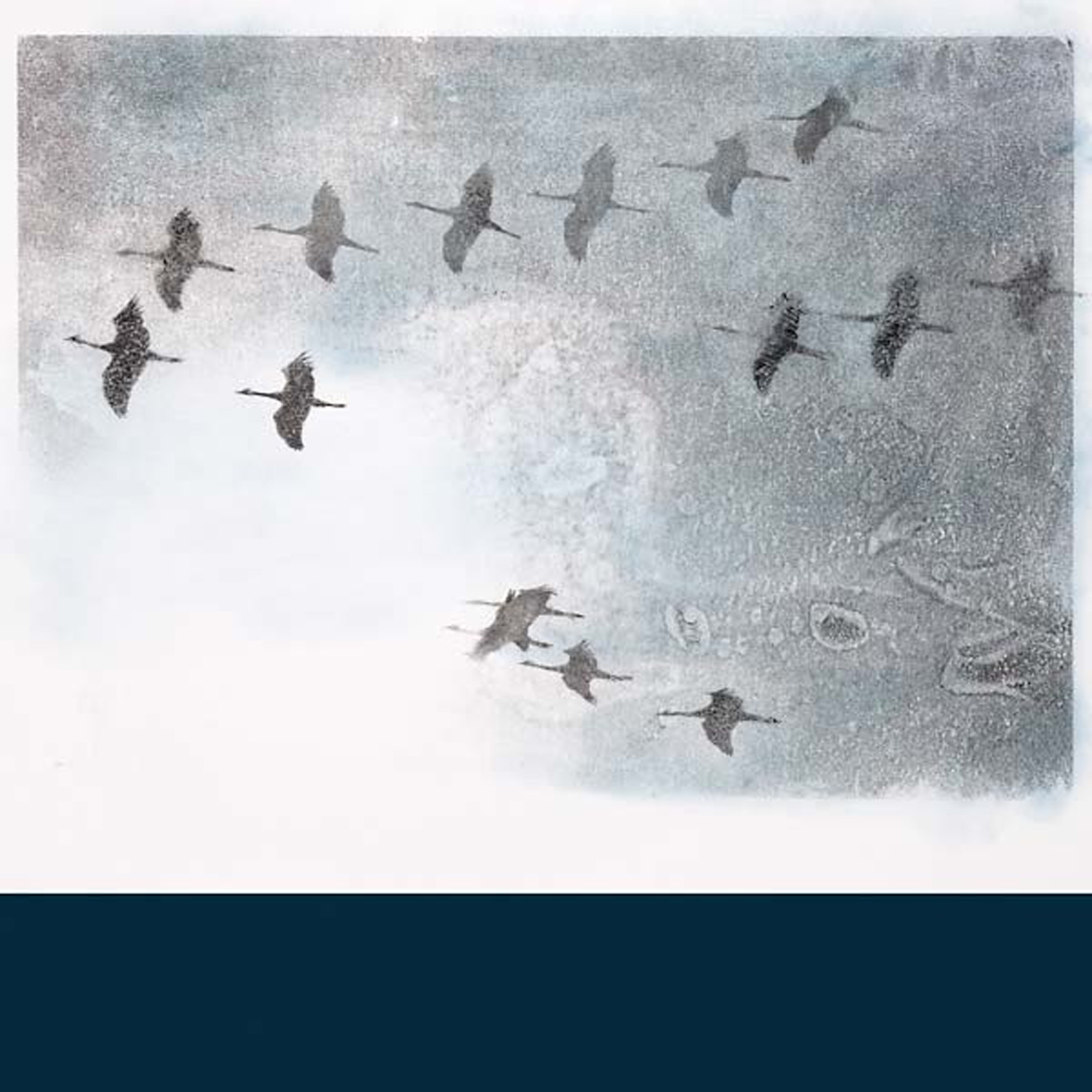 Stephen O’Malley’s already unusual career has certainly taken some odd and unexpected turns in recent years, as the erstwhile amplifier-worshipper currently has both an insanely ambitious and jazz-inspired avant-metal masterpiece (Monoliths and Dimensions) and a Scott Walker collaboration under his belt.  The latest unlikely development is that Frédéric Blondy recruited O’Malley in 2014 to compose for the French improv orchestra ONCIEM, helpfully noting that he should be "punk rock" about it.  Ethos-wise, O'Malley did not disappoint in that regard, cavalierly disregarding some very key perceived limitations for various orchestral instruments.  In a musical sense, however, Gruidés is a wonderfully droning, heaving, and dissonant epic of modern composition (and all done without distortion or a wall of amplifiers).
Stephen O’Malley’s already unusual career has certainly taken some odd and unexpected turns in recent years, as the erstwhile amplifier-worshipper currently has both an insanely ambitious and jazz-inspired avant-metal masterpiece (Monoliths and Dimensions) and a Scott Walker collaboration under his belt.  The latest unlikely development is that Frédéric Blondy recruited O’Malley in 2014 to compose for the French improv orchestra ONCIEM, helpfully noting that he should be "punk rock" about it.  Ethos-wise, O'Malley did not disappoint in that regard, cavalierly disregarding some very key perceived limitations for various orchestral instruments.  In a musical sense, however, Gruidés is a wonderfully droning, heaving, and dissonant epic of modern composition (and all done without distortion or a wall of amplifiers).
DDS
In general, I have always found orchestral albums to be something like the last refuge of the damned, generally arising when an artist is either running out of ideas or egotistically hoping to finally prove to the world that he or she is a serious artist.  Unsurprisingly, they rarely go well, more often than not erring on the side of bombastic excess.  That said, a man known for performing in a black cloak enshrouded in fog before an intimidating mass of amplifiers probably does not have to worry about anyone accusing him of excess anytime soon.  If anything, Gruidés dials down Sunn O)))’s excesses, showing that O'Malley can be every bit as fearsome without the benefit of either electricity or showmanship.  Also, Gruidés is not much of a radical departure from Sunn O))) at all–it is just that the droning guitars have been replaced with droning strings and horns and that the piece in question is a little more long-form than usual (clocking in at roughly 35 minutes).
Aside from its initial fanfare and harrowing crescendo, the bulk of Gruidés is devoted to sustained, uneasily harmonizing strings and woodwinds.  That is where the "punk rock" aspect of the composition comes into play, as holding a single note for several minutes presented a serious endurance test for ONCIEM’s hapless woodwinds.  The resultant effect seems to have been worth the effort though, as Gruidés simmers and undulates beautifully.  Also, the dense and shifting mass of sustained tones takes on an increasingly smeared and ominous feel as overtones mass and bleed together.  Later in the piece, the churning orchestral thrum is further augmented by hollow, gloomy, and broken-sounding beat that builds into an increasingly dense and sickly sounding wall of buzzing, clashing drones.  To his credit, O'Malley does not quite go for an apocalyptic "sensory overload" finale, even if the climactic horns sometimes sound that way: for all of its crushing power, Gruidés is ingeniously undercut by a very wounded-sounding and lurching pulse, balancing its final display of majestic force with an equal (and welcome) helping of grotesquerie.
Notably, I am fairly casual Sunn O))) fan, so I did not have extremely high expectations for this album, basically anticipating another likable, but easily forgotten side-project.  Consequently, I was quite surprised by how much I enjoyed Gruidés –it is actually one of my favorite O’Malley albums to date.  It would have been impressive enough just to successfully translate the Sunn O))) vision into orchestral form, but O'Malley managed to go one bold step further and create something that should please both his existing fans and fans of the uglier and more adventurous side of modern composition. Gruidés is an impressively satisfying, inventive, and disquieting tour de force.
 
Read More
- Administrator
- Albums and Singles
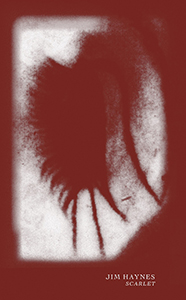 As a sound artist, I have always felt Jim Haynes is criminally underappreciated. His work always resonates with me as an intricate, dense matrix of processed and found sounds, always with some organic, natural elements, but demolished and treated to bear no resemblance to their origin. Like his visual work, Haynes captures that powerful sense of rust and decay on Scarlet, culled from electromagnetic and organic sources, and shaped into a dizzying but beautifully bleak cassette.
As a sound artist, I have always felt Jim Haynes is criminally underappreciated. His work always resonates with me as an intricate, dense matrix of processed and found sounds, always with some organic, natural elements, but demolished and treated to bear no resemblance to their origin. Like his visual work, Haynes captures that powerful sense of rust and decay on Scarlet, culled from electromagnetic and organic sources, and shaped into a dizzying but beautifully bleak cassette.
Split into eight different pieces, four on each side of the tape, Scarlet feels more like a mammoth work in two distinct parts, with each half sounding especially dynamic and constantly evolving.Haynes manages to find that perfect balance in this type of work between allowing a segment to repeat appropriately enough to be fully appreciated, while never becoming too monotonous or simplistic.
One of the other reasons that Haynes' work is so good is that he does an exceptional job at balancing rhythms and dissonance.On the opening "Cerise Cerise," he mixes panned, pseudo-rhythmic loops over a sprawling electronic hum.As the pace of the loops increases and the humming electronics vary, it results in a sound that more resembles drum programming and synth melodies rather than purely deconstructed noise.
"Kazanl«ék" is another piece in which he carefully processes one of his ambiguous noises into something resembling a conventional keyboard sound, but then opened up into a ghostly, unsettling bit of dissonant tone.Just as adeptly as he created a rhythmic bit of near-music, he pulls it apart into first a blast of noise and then subtle, pensive passage of crackling."Alizarin" is another example in which he first implements a bit of rhythm, but allows it to dissolve into an ambient expanse of what could be the multifaceted hum of an air conditioning system.
Abstraction pays a more significant role in a composition such as "Venal," which is at first a collage of female voice samples but quickly transitions into passages of erratic noise explosions, culminating in a wet burst of electronics that are amongst the most aggressive I have ever heard him utilize.The lengthy "Racine to Vermillion" is a showcase for Haynes' undeniable skill at creating sonic textures that can almost be physically felt, amidst sputtering static and a windswept tundra of broken electronics.
Jim Haynes' knack for destroying and then rebuilding sounds into something completely different continues to be exceptionally abundant on Scarlet.Even beyond the specific sounds, the mood and sensibility he creates is one of post-apocalyptic decay and destruction, and the sound of a world without humans, a bleak yet amazing sculpture of sound.
samples:
 
Read More
- Administrator
- Albums and Singles
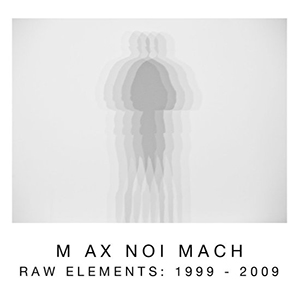 Too structured to be labeled noise, yet too dissonant to fit into any other genre, Robert Francisco's work as M Ax Noi Mach is an idiosyncratic project in the best possible way. On this collection of four track recordings over the span of a decade, guitar pedal feedback loops are set immediately next to skittering 808 hi-hat cymbals, defying categorization and being extremely memorable for just that reason. Clocking in at 22 songs and over 70 minutes, it is a daunting yet rewarding collection.
Too structured to be labeled noise, yet too dissonant to fit into any other genre, Robert Francisco's work as M Ax Noi Mach is an idiosyncratic project in the best possible way. On this collection of four track recordings over the span of a decade, guitar pedal feedback loops are set immediately next to skittering 808 hi-hat cymbals, defying categorization and being extremely memorable for just that reason. Clocking in at 22 songs and over 70 minutes, it is a daunting yet rewarding collection.
Francisco's output often does feature many of the noise scene’s hallmarks:feedback, low fidelity distortion, bizarre tape loops, and so forth, but it is how he structures and assembles these elements is what sets his work apart.Songs such as "Swarm" and "Cut Yourself" are heavily built on loops of indeterminate and blown out noise, but he assembles them into a taut, repetitive structure that is more befitting of minimalist techno.At his harshest there is some kinship with Pain Jerk's more structured works, but with far less chaos.
Screamed vocal passages, another consistent noise trait, also appear throughout these pieces.The aforementioned "Cut Yourself" and "The Big Baby" feature harsh and aggressive shouts, intelligible but placed at a comfortable level in the mix to not overshadow anything else."Intellectual Superiority" is one of the points where noise seems to overtake structure, largely driven by a raw, heavy engine like synth line.
The pieces where Francisco emphasizes drum machine beats are the ones that resounded most strongly with me.A song such as "Bass Murder" may be based around a relatively simple bit drum programming, but the overdrive on the kick drums, and the way he shifts the piece from order to chaos is accomplished so exceptionally well."Chaser" has a hint of distortion on the beats, but not overly so.Blended with a nastier synth lead, it results in a delightfully ugly piece of music.
The latter half of the disc is where Francisco goes in some distinctly different and unexpected directions.The first half may feel thematically linked and consistent, but "RM04" throws in what sounds like sampled reggaeton loops and weird oscillator passages that are eventually devoured by a drum machine that becomes more and more destructive."Pain", besides having a comparably rather clean sounding production, and with its odd fragmented melody it feels like a deconstructed chopped and screwed take on mid 1990s hip hop.
The second half may feature some of the disc's odder moments, but as a whole Raw Elements hangs together more cohesively than I would have expected from a decade of four track tape experiments.Of course there are some parallels that can be drawn to other artists, but make no mistake, this is the result of Robert Francisco’s singular vision.Strong rhythms, crunchy noise, and big beats come together in a gripping and powerful release.
samples:
 
Read More
- Administrator
- Albums and Singles
 Utech Records has, over the past decade, released critically acclaimed albums from established artists such as James Plotkin, Lasse Marhaug, and Justin Broadrick, as well as fostered the work of newer projects like Locrian, Nadja, and Horseback. Many of those artists appear on this digital compilation with exclusive or live material unavailable elsewhere. It is nearly four and a half hours of music, with all of the proceeds going to support the Utech family at this incredibly difficult time. In an era where so many crowd funding campaigns are simply a cash grab, this is one that will truly help a family in need.
Utech Records has, over the past decade, released critically acclaimed albums from established artists such as James Plotkin, Lasse Marhaug, and Justin Broadrick, as well as fostered the work of newer projects like Locrian, Nadja, and Horseback. Many of those artists appear on this digital compilation with exclusive or live material unavailable elsewhere. It is nearly four and a half hours of music, with all of the proceeds going to support the Utech family at this incredibly difficult time. In an era where so many crowd funding campaigns are simply a cash grab, this is one that will truly help a family in need.
The digital compilation is available at http://utechfamilybenefit.bandcamp.com
Kim Utech lost her battle against breast cancer on July 1, 2015. She leaves behind her husband Keith and their two children, 12-year-old son Jackson, and 9-year-old daughter, Piper. Keith's sister-in-law, Michelle Kubler Utech, created a GoFundMe page to raise funds to assist Keith with living expenses while he takes time off to be with their children and to help with the expenses incurred while Kim was receiving treatment.
This compilation, assembled by friends and supporters of Utech Records, contains forty-one tracks worth of exclusive material–some previously unreleased, some recorded live, some created specifically for this release–with a runtime of nearly 4 1/2 hours.
100% of the proceeds (after Bandcamp and PayPal take their cuts) will be donated to the Utech Family Fund.
For more information about the Utech Family Fund, visit the GoFundMe link below:
Read More
- Administrator
- Albums and Singles
Though known as a touring and recording musician associated with Nine Inch Nails, Alessandro Cortini has really come into his own via his Forse trilogy and his 2014 Hospital Productions debut, Sonno. For his Hospital follow-up, he maintains the grittiness and intimacy introduced on his debut, but expands upon it, offering a wider spectrum of emotion and depth.
Like Sonno, Risveglio was written and recorded while on tour. The drive to create intimate works during late-night downtime reveal Cortini to be committed to personal vision beyond the call of duty. While Sonno was created using only a Roland 202 and delay, Risveglio adds a Roland TB303, synced to the 202. In his own words, "The 303 can be such a haunting instrument used in a certain way, and I felt it completely fit the mood of the previous work I have done on the 202, especially when given a specific location in space....it’s such a living instrument." The addition of Roland TR606 gives one of the pieces a rhythmic pulse that separates it from the preceding synthscapes and renders Risveglio altogether a more dynamic affair than Sonno.
With Risveglio, Cortini implores and emphasizes the imperfections and visceral textures of electronics vacant from so much contemporary solo synthesizer music. Furthermore Cortini carves out a similar space to what Kevin Drumm's Hospital releases have done for the worlds of Drone and Noise by finding the emotional and ultimately human voice within synthesis.
More information can be found here.

Read More
- Administrator
- Albums and Singles
 When Robert Hampson reactivated Loop and toured after a lengthy dormancy, I was rather surprised (as were many other fans). When the recording of new material was announced, I was shocked. As an artist who had gone so long intentionally avoiding his return to the guitar, it is not a move I expected. Not necessarily surprising, but definitely reassuring, Array 1 sounds exactly like Loop should sound in 2015, and the natural expansion of the sound Hampson and company perfected during their first phase.
When Robert Hampson reactivated Loop and toured after a lengthy dormancy, I was rather surprised (as were many other fans). When the recording of new material was announced, I was shocked. As an artist who had gone so long intentionally avoiding his return to the guitar, it is not a move I expected. Not necessarily surprising, but definitely reassuring, Array 1 sounds exactly like Loop should sound in 2015, and the natural expansion of the sound Hampson and company perfected during their first phase.
Their first recorded Loop material since 1990's A Gilded Eternity, Array 1 continues that disciplined, almost ascetic devotion to minimalism perfected on that album.That sound, filtered through Main’s almost clinical avant-garde sensibility, is what emerges.Even further gone is the garish '70s psychedelic haze from the earliest material, instead replaced with a sonic purity befitting Robert Hampson's solo work and time spent with more academic sonic pursuits. Robert is joined by drummer Wayne Maskell,guitarist Dan Boyd, and bassist Hugo Morgan, all who are from The Heads.
"Precession," released as a teaser earlier this year, was an accurate indicator of how the rest of the record would be.Repetitive, but captivating structures, a bit of soloing, and Hampson's voice low in the mix as always, is consistent with what I hoped it would be. "Aphelion" comes from a similar template but with a slower pace and overall bleaker sound.The tom-heavy drumming calls to mind some of the Gilded Eternity era material, but sounds entirely fresh, with a brief but memorable chorus. The seven minute "Coma", credited to Hampson solo, is perhaps more in league with the middle period of Main’s activity, albeit with somewhat less abstraction.Long, sustained passages of guitar sound, tinged with digital processing, expand beautifully.Unlike the later Main material, this sounds strictly guitar-centric, but with enough processing and production to sound utterly unique.
The entirety of the second side of Array 1 is occupied with the 17 minute "Radial," and perhaps the zenith of the EP.The first five or so minutes resemble the abstract "sounds kind of like guitar but processed like crazy" approach of "Coma," though a bit stripped back and more emphasis on the low end.The sound slowly builds, layer upon layer of guitar with the occasionally abrasive bit of rattling metallic percussion cutting through, obviously building to something.At around five and a half minutes in, Maskell's drums fade in slowly, an introduction and a motorik sound that, if not an overt nod to Neu's "Hallogallo" likely a subliminal one, and brought in are a delightfully brittle digital guitar riff and understated backing bass.With Hampson's vocals, the group lock into a brilliant groove that ranks amongst the best the band has ever done in their history before fading the piece back to the abstract sonic expanse it rose up from.
Array 1 does not sound like some sort of "lost" Loop album, and I am very grateful for that.It seemed for the longest time Robert Hampson was doing everything he could to escape the guitar and associated rock music, but us fans are fortunate that he gave in to old habits.
samples:
 
Read More
- Administrator
- Albums and Singles
 As much of a showcase for vintage synthesizers as it is an EP of dance beats, the duo of Flatliner have complied this showcase of their combined collection of prized gear, but work those instruments into strong and memorable songs, rather than just collections of classic noises. Adam Fangsrud and Jesse Strait present four distinct pieces on Black Medicine that all have their own specific mood and identity, but also blend together thematically, resulting in a diverse yet cohesive release.
As much of a showcase for vintage synthesizers as it is an EP of dance beats, the duo of Flatliner have complied this showcase of their combined collection of prized gear, but work those instruments into strong and memorable songs, rather than just collections of classic noises. Adam Fangsrud and Jesse Strait present four distinct pieces on Black Medicine that all have their own specific mood and identity, but also blend together thematically, resulting in a diverse yet cohesive release.
The opening bars of "Blasted Highway" clearly define what the remainder of this record will sound like.A phased, rapidly arpeggiating synth line and the distinctive rim shot of a TR-808, later mixed by the duo with the brittle white noise snare drum ensures a distinctly analog feel to the piece.Propelled by a basic, but effective sequencer line and heavily processed vocals, the rhythm stays constant as the mix changes significantly throughout dramatic pauses and restarts.
"PC Corporation" is comparably more laid back from a rhythmic standpoint. It is slower but with a sublime, understated bassline.The opening synth pads and patterns scream 1980s movie soundtrack, but as the piece develops, Flatliner introduce more dissonant synths to produce a more harsh, idiosyncratic edge.On the other side of the record, "City Lights Receding" has a sound befitting its late night urban imagery.Mostly dramatic synth pads and rapid melodies, it has a smaller, more intimate sound compared to the club filling synths of other tracks.Between this and the heavily vocoded vocals, at times it could be a lost mid-period Pet Shop Boys demo.
The final song, "Scrap Heap," might begin with a dramatic, expansive soundtrack sense to it, but the synth washes eventually give way to the taut drum machine beat.Compared to the rest of the record, Flatliner's emphasis is less on a driving melody.Instead, the sequencers mimic the drum machines and spurt out a kinetic, rhythm heavy bursts of sound, with a hint of analog crunch to it.
In around 20 minutes, Flatliner cover a wide array of moods and styles, all the while sticking to their chosen vintage electronic sounds.While their sound is heavily indebted to the gear that they use, Fangsrud and Strait are able to use this equipment to construct songs, ones that are just as memorable at a retro night club as they are in a more intimate listening environment.
samples:
 
Read More
- Administrator
- Albums and Singles
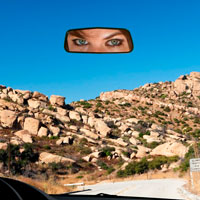 Ostensibly a hard rock band, there is much more to Black Love lurking beneath the superficial. Drummer Tony Cicero and Sergio Segovia’s bass (and electronics) may sound like a conventional arrangement, but David Cotner’s vocals and unconventional additions (a mule jawbone, for example), add an additional layer of depth. Across these four songs there is more than a hint of broken romance bitterness, but with the right amount of sardonic and wry self-awareness to make it anything but trite.
Ostensibly a hard rock band, there is much more to Black Love lurking beneath the superficial. Drummer Tony Cicero and Sergio Segovia’s bass (and electronics) may sound like a conventional arrangement, but David Cotner’s vocals and unconventional additions (a mule jawbone, for example), add an additional layer of depth. Across these four songs there is more than a hint of broken romance bitterness, but with the right amount of sardonic and wry self-awareness to make it anything but trite.
At first listen, Unlust is heavily steeped in a bass driven, garage sound; a rawness that is reminiscent of the Touch & Go/Amphetamine Reptile roster in the early 1990s.Opener "Insight" takes a bit of time with its minimalist bass/drum/bells, but it soon locks into a groove that catchy yet abrasive.Cotner's vocals are up front, uncomfortable and twisted befitting the subject matter."Airlessness" follows similarly, but puts an even greater emphasis on Segovia's bass and more unconventional percussion courtesy of Cotner, all the while taking on a slightly more aggressive tempo.
The second half of the record leads with "Being Stabbed," all rattling noisy bass and big, booming drums.Lyrically violent and disturbing, with the content working both on the literal and figurative implications of the title, the band somehow manages to shape such ugliness into a memorable chorus. The longer "Had a Bad Dream" is where all of the best pieces of the Black Love sound come together the most effectively.The lengthier duration allows the trio a more expansive, experimental opening that leads into a throbbing bass guitar and subtle percussion.A dirgy march, with frustrated and nihilistic vocals, it eventually goes into a faster paced groove but never strays far away from sounding heavily dismal.
While lyrically and thematically Unlust is a single-note affair of wretched anti-romantic pessimism, Black Love combine just the right amount of self-awareness, and big, noisy bass and drums, to result in an album that is not the plodding emo-fest it could otherwise be.Instead it is appropriately bitter and unpleasant, but not necessarily one of the records that are only pulled out after a particularly bad breakup.With those themes coupled with an excellent rhythm section, Unlust comes together perfectly.
samples:
 
Read More
- Administrator
- Albums and Singles
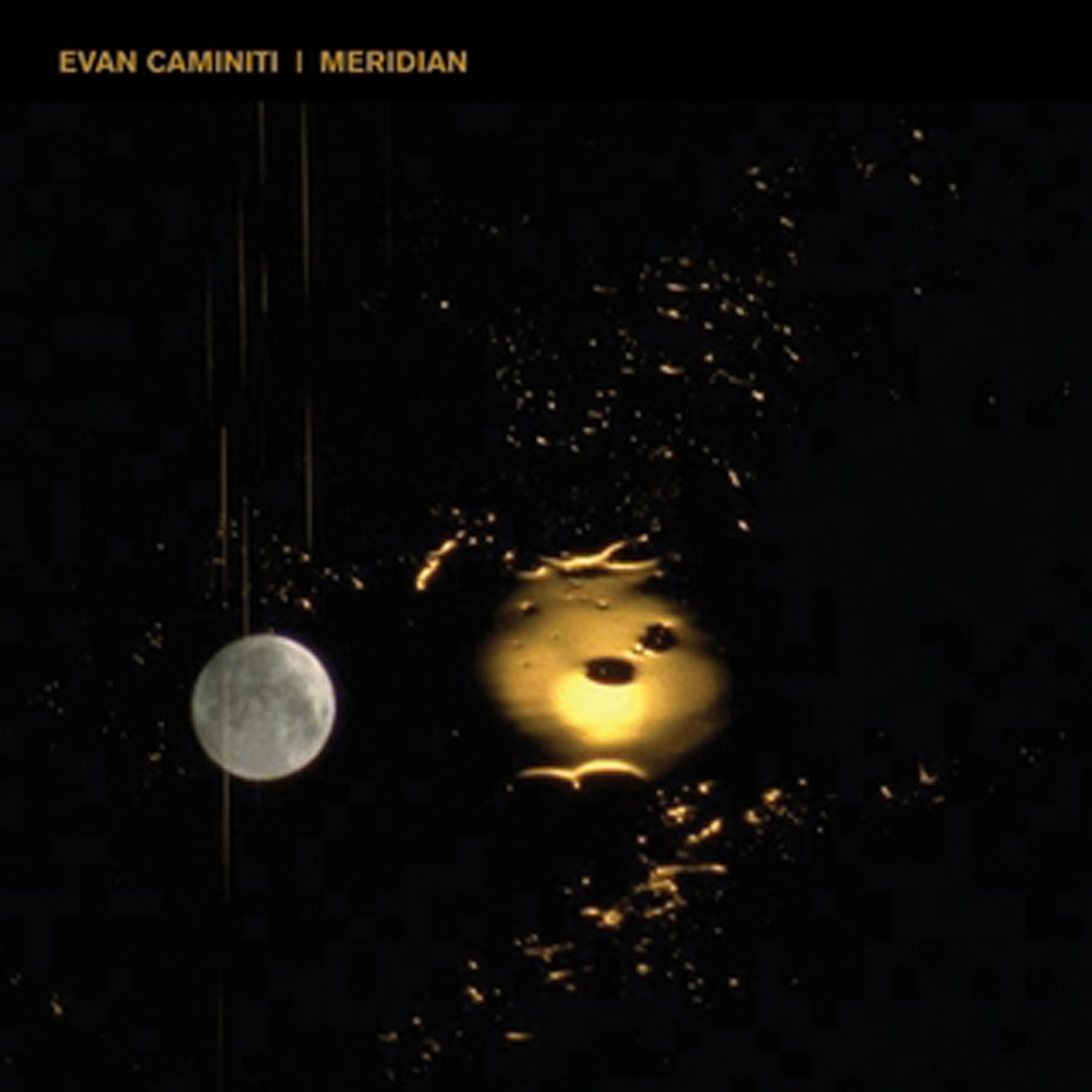 As much as I have enjoyed both Barn Owl and Evan Caminiti’s solo work in the past, his career has certainly been an unusual and chameleonic one, generally alternating between heady drone and his own particular strain of desert rock.  In theory, that history of creative restlessness should have prepared me for Meridian, but I truly did not see this monster of a synthesizer album coming.  The surprise is not that Caminiti’s guitar is nowhere to be heard or even that he made an entirely electronic album–it is that his first foray in this direction is such a mesmerizing tour de force that effortlessly transcends the rest of the synthesizer pack (and most of Evan's own previous discography).
As much as I have enjoyed both Barn Owl and Evan Caminiti’s solo work in the past, his career has certainly been an unusual and chameleonic one, generally alternating between heady drone and his own particular strain of desert rock.  In theory, that history of creative restlessness should have prepared me for Meridian, but I truly did not see this monster of a synthesizer album coming.  The surprise is not that Caminiti’s guitar is nowhere to be heard or even that he made an entirely electronic album–it is that his first foray in this direction is such a mesmerizing tour de force that effortlessly transcends the rest of the synthesizer pack (and most of Evan's own previous discography).
For all of my griping about the cloying trendiness and general glut of synthesizer albums, I certainly still wind up listening to a hell of a lot of them for some reason.  Unsurprisingly, there are several recurring issues that I find irksome, but the main one (aside from gear fetishism) is that so many artists are so insistent on recording "live" with no overdubs, placing the purity of the performance above their actual compositions.  In some cases, that spontaneity and simplicity work quite well (Alessandro Cortini and Sam Prekop spring to mind), but in a lot of cases I find myself wondering how much better an album could have been if it that performance had been expanded into something more ambitious and multilayered.  Evan and I apparently see eye to eye on that, as his talents as a composer and producer more than keep pace with his abilities as a musician on Meridian (to quite a striking degree, actually).  While most of the songs themselves are very good, the real magic often lies in what Evan does with them, transforming his ideas into densely buzzing, rich, and dynamic works of beauty.  This is a massive-sounding and complexly layered album from start to finish and it is clear that a great deal of time was spent obsessing over details and textures (and not spent in vain).
Curiously, Evan buries most of his strongest pieces quite late in the album.  My personal favorite is probably "Signal," which marries a gently burbling backdrop to an eerie host of quivering, strangled, and dissonantly harmonizing sustained tones.  It strike a wonderful balance between John Carpenter-worship/retro-kitsch and something much more ugly and visceral.  Such dissonance is far from the norm, however, as most of Meridian's other highlights center around seamless, stunning transitions or passages of warm, immersive beauty.  "Excelsior," for example, opens as a hypnotically rippling and throbbing drone piece that gradually becomes increasingly sizzling and pulsating.  Then, suddenly, it all gives way to a simple, heavenly thrum that is propelled along by hollow percussion and sonar-like pings as its edges gradually fray into distortion.  "Steam" is yet another gem, buzzing and throbbing along amiably with a lurching beat until something that sounds like a broken carousel fades in, tearing the song into a series of alien, shattered-sounding pulses swelling out of a vibrant and dense bedrock of sputtering sub bass.
The sole area in which Meridian falls short of greatness is that a number of the songs end somewhat abruptly, as if Caminiti was not sure quite where to go once he reached the crescendo.  That is a little weird, since he otherwise transitions between themes quite seamlessly and often ingeniously.  Fortunately, the album's strong points greatly outweigh that one quibble.  In fact, they absolutely bury it–there is no end to the number of things that I could praise about this album.  It essentially feels like Caminiti set out to make an excellent synthesizer album, succeeded, then threw himself wholeheartedly into artfully breaking it and purging it of as many derivative tropes as possible.  No beat is ever straightforward (they all wobble, lurch, stutter, echo, and/or quickly dissipate) and no motif is ever safe from collapsing upon itself, being torn apart, or being transformed into a sizzling, crackling ghost of itself.  I love that.  This is a huge leap forward for Evan Caminiti.
 
Read More
- Administrator
- Albums and Singles

Back in 2013, Oiseaux-Tempête’s excellent debut established them as something akin to Europe’s answer to Godspeed You Black Emperor, which is not a bad niche to occupy at all.  For their follow-up, however, the band have changed things up a bit, significantly altering both their approach, their vision, and their line-up (they enlisted bass clarinetist Gareth Davies).  While they generally seem like good moves in theory, the aforementioned innovations have resulted in something of a confounding and (at best) lateral transformation, as Ütopiya? is generally a bit weaker and more bombastic than its predecessor.  There are unquestionably a handful of bright and inspired moments to be found, of course, but Ütopiya? mostly lies somewhere in the unfortunate no-man’s land between "misstep" and "transitional album."
From their inception, Oiseaux-Tempête offered a lot of promising elements that distinguished themselves from anyone treading similar territory.  For one, their work was conceptually intertwined with that of photographer/filmmaker Stéphane C, who was documenting the political and economic chaos in Greece.  Also, the band's debut adeptly balanced their more straight-forward post-rock tendencies with a healthy amount of electronic touches and well-placed field recordings and snatches of dialogue.  With Ütopiya?, however, the band have toned down their more conceptual, ambitious, and multimedia-inspired tendencies.  There is still a vague political theme (this time centered on Sicily and Istanbul), but the foursome have musically chosen a more muscular and stripped-down sound, presumably one that translates much better to live performances: minimal layering, minimal electronics, and plenty of explosive crescendos.  In some ways, that works quite well, leaving plenty of room for Stéphane Pigneul's visceral bass riffage and Frédéric Oberlands' alternately tender and explosive guitarwork.
Unfortunately, there are a couple of very persistent flies in the ointment.  The main problem is that Ütopiya? has the relentlessly dour tone of a prolonged lament.  That may be entirely befitting of whatever they are trying to convey politically, but it unavoidably makes the album a bit of a slog to get through.  In fact, the slow-motion brood-fest only truly lifts at the very end of the album with the absolutely stellar guitar-shimmer-and-crickets reverie of "Aslan Sütü (Santé, Vieux Monde!)."  The CD version additionally tacks on yet another gloom-free piece in the propulsive 22-minute percussion work-out and space-guitar improv of "Palindrome Series (Live at Saint-Merry)," but the first nine songs on the album are generally very much all in the same vein, both mood-wise and structurally.  That structure part is the album’s second shortcoming, as every song seems to follow a very similar formula at a very similar (and rather leaden) pace: Oberland plays clean, delay-heavy melodies and arpeggios over a meaty bass riff while Davies' clarinet meanders around the central theme, then it all gradually escalates to a dramatic and stomping crescendo of crash cymbals and guitar pyrotechnics.
Admittedly, the band conjure up some very appealing variations on that formula, but it is a conspicuous formula nonetheless.  The most significant twist is definitely "Ütopiya / On Living," which features a haunting monologue courtesy of The Ex's G.W. Sok.  Yet another highlight is Oberland’s absolutely apocalyptic wah-wah firestorm at the end of "Someone Must Shout That We Will Build The Pyramids."  The other great moments are a bit more understated, however, best exemplified by the way Pigneul’s disco-damaged and PIL-worthy bass line emerges from the sound collage of "Yallah Karga (Dance Song)."  I am also quite fond of "Soudain Le Ciel," as drummer Ben McConnell slows down his standard crawl to an appealingly stumbling and broken-sounding degree.
Other times, unfortunately, Oiseaux-Têmpete misjudge an entire song, laying on the sadness and drama too heavily without anything particularly compelling to offset it.  "Requiem For Tony," for example, sounds like the crescendo of an early King Crimson epic without any of the surrounding song.  I also winced a bit when the dramatic minor key piano appeared in "Fortune Teller" and wished that the otherwise masterfully hallucinatory "I Terribili Infanti" did not depend so heavily upon a foundation of melancholy acoustic guitar.  In general, however, Ütopiya? misses the mark solely because the band is so hell-bent on evoking one mood and just keep going back to same well over and over again.  That said, I have a personal and highly subjective antipathy towards anything resembling cinematic instrumental rock, so those without such a bias will probably like this album considerably more than I did, as there is an enormous amount of that sort of thing here.  I mostly just like Ütopiya? for "Aslan Sütü (Santé, Vieux Monde!)" and Oberland’s howling guitar solos though.  While I believe that this album occasionally attains greater heights than Oiseaux-Têmpete’s debut, the songs are just not fluid and varied enough to cohere into nearly as strong of a whole.
 
Read More
- Administrator
- Albums and Singles
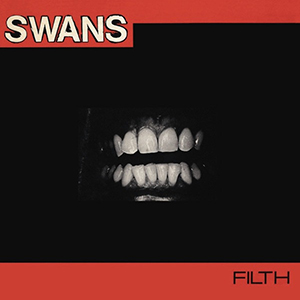 Even with their reappearance in the past five years, the earliest days of Swans are the ones that are often cited as the most important and essential. It almost is a perfect example of the hipster cliché of "Oh I only like their EARLY material (or pre-Jarboe)". The fact is that Swans were amazing from their inception to today, and whatever stylistic shifts they made were brilliant, if sometimes drastic and unexpected. Amidst their always-expanding touring and recording schedules, Michael Gira has initiated a reissue campaign, beginning with an expanded version of their debut, Filth. A template for most heavy music that has followed, the originator is still peerless, and could be released today and be just as deserving of the accolades and admiration it has received since 1983.
Even with their reappearance in the past five years, the earliest days of Swans are the ones that are often cited as the most important and essential. It almost is a perfect example of the hipster cliché of "Oh I only like their EARLY material (or pre-Jarboe)". The fact is that Swans were amazing from their inception to today, and whatever stylistic shifts they made were brilliant, if sometimes drastic and unexpected. Amidst their always-expanding touring and recording schedules, Michael Gira has initiated a reissue campaign, beginning with an expanded version of their debut, Filth. A template for most heavy music that has followed, the originator is still peerless, and could be released today and be just as deserving of the accolades and admiration it has received since 1983.
Filth somewhat predates Swans at their most brutal, which is a sound that mastered on the Cop and Young God records.With Filth, there was still a vestigial trace of post-punk and no-wave inclinations that came through most clearly on the debut EP, which is included here for the first time since the first CD release of Filth.The first two discs of this collection of three captures the same material and bonus tracks of the Filth/Body to Body, Job to Job reissue that appeared back in 2000.While it was not in dire need, it does sound as if there has been a subtle remastering that gives the bass a little more force and power.
The material clearly set the stage for the big violent riffs and slow, lugubrious pacing that many associate with Swans, and were adapted by so many followers.The opening seconds of "Stay Here" make this abundantly clear, from the rusty bass pounding and squall of Norman Westberg's guitar noise into Gira's shouts of "Be strong!/Be hard!/Flex your muscles!" introducing one of the most angry, hate-filled (most often self-directed) records ever recorded.While it may superficially be a lumbering beast of detuned bass and clanging metal, "Weakling" actually disguises a blues shuffle that shows the influence artists like Howlin' Wolf had on the band even in those most dissonant days.
What sets Filth apart from what came later are the odd, uncharacteristic moments such as the almost danceable, snappy beat of"Big Strong Boss"; a tempo and a sound that was more in tune with their earliest work compared to what came later.The short "Freak" is another odd one:tape collages and treatments with Gira's manic ranting on top, closing with one of the best bass guitar attacks ever, all within the span of barely over a minute.Swans loosen up on "Right Wrong," with a more improvised feeling, but they never lose that aggressive thud of the rhythm section of Harry Crosby, Jonathan Kane and Roli Mosimann.
Disc two, Body to Body, Job to Job, acts largely as a compilation of early versions of Cop/Young God era material, unreleased songs, and work that was only performed live, not in the studio.Well-known songs such as "Half-Life" and "Cop" are not drastically dissimilar to their final forms, but have a slightly more raw feel that compliment the album versions extremely well.A song like "Seal it Over" captures the transition from Filth Swans into Cop Swans, displaying the latter’s penchant for slowly trudging structures, but the former's more experimental approach to using guitar as an accent rather than the primary focus.Interspersed throughout are tape loops that were used in live performances in the 1982-83 era and on their own capture the proto-industrial vibe they would return to on Greed and Holy Money.
The material on the third disc is what I was most interested in, having owned the previous compilation of the first two discs for a number of years.The debut EP features the elements that we all know and love as Swans, but with a different approach and style.The nervous bass, complex drumming and abrasive saxophone stabs of "Laugh" works perfectly as a distinctly American take on the early Factory sound.The same goes for the melodic bass lead "Speak," where the harsh guitar sound is more of a textural element, and Gira is singing, rather than the shout/scream he was so fond of on the early records.Moments of these songs could almost be the Talking Heads, if they were belligerent drunks rather than effete art kids.
Following the EP is a selection of live tracks from 1982-84, largely familiar songs in a live context.They might not be the best quality from a recording standpoint, but are still entirely listenable and make for some unexpected variations of familiar work.Obviously not professionally captured, the sound is more on-par with the rougher moments of Body to Body, Job to Job. "Big Strong Boss" is slowed down and sloppier, while "Clay Man" is a rolling storm of guitar noise rather than big sustained riffs.
The final three performances are a selection of songs from 1984 that would later appear on Cop and Young God, heralding that slow, pugnacious sound the band became most known for.The recording quality might not be optimal, but the over emphasized bass gives an additional layer of intensity to the already oppressive sound of "I Crawled" and the slow assault of "Why Hide".
Given that two of the three discs of this Filth reissue were themselves reissued only a handful of years ago, the interest for most Swans aficionados is going to be on the third disc’s rarer EP material and unreleased live content.Neophytes drawn in by the massive critical acclaim for To Be Kind will definitely find this a comprehensive, if daunting history lesson.Personally, I think the asking price is worth it alone for the remastered debut EP material.No matter what, however, this period of Swans has lost none of its impact or power three decades later.
samples:
 
Read More

